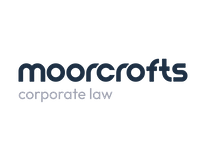Wayleave Agreements for IT communications – what you need to know as a tenant of commercial premises
A Wayleave Agreement gives a service provider a right to install its equipment through or over a third party’s land. In the past these have tended to be relevant to property developers but the growing reliance on fast IT connectivity means the need for these should be considered when acting for a Tenant of commercial property as well.
Whilst a new development of commercial buildings or a recently refurbished building may have fibre optic cables laid to each individual unit older buildings will not. A commercial lease will normally only grant a Tenant a right to connect into existing service media in the common parts but if there is no existing IT cabling/fibre optic cabling in these areas this right is of little use. Unlike internal alterations a Tenant does not usually have a right to carry out works to areas outside of its demise.
How then can it ensure the necessary IT cabling is available to connect into so that it can operate its business?
Where IT cabling is not yet available the Tenant will need to contract with an IT service provider for the installation of such cabling. The cabling will need to pass over or through the common parts of the building or the exterior of the building, which are areas over which the Tenant has no control. The Tenant will therefore need the Landlord’s consent for such cabling to be installed but the Landlord is under no obligation to agree to this, nor to act reasonably in considering any such request. Although it is the Tenant who will commission the cabling the IT provider will want confirmation of the Landlord’s consent to this. The Landlord will usually want such right to be formally documented and it will in fact be the Landlord and the IT provider who enter into the Wayleave Agreement, not the Tenant.
What is the Landlord’s concern?
The IT equipment will remain the property of the IT provider. The Landlord will not want there to be any suggestion that the IT provider has acquired any rights of possession over the common parts by virtue of its equipment being installed. The Landlord will also want to ensure that the equipment is laid and (where no longer required) removed at no cost to the Landlord, in accordance with all safety regulations and that any damage is made. From the IT provider’s point of view it not only needs a right to install its equipment but it needs to ensure that it can have access to such equipment to inspect, maintain and repair it and subsequently remove it (if required).
What is the issue for the Tenant?
The main concern for the Tenant is to ensure that any required IT equipment/cabling is installed by the time it has completed its fit out works and is ready to start trading/operating from the Property. Since the Wayleave Agreement is entered into between the Landlord and the IT provider the Tenant has little direct control over the progress of completion of the Wayleave Agreement. As solicitors acting for a commercial Tenant therefore it is important to ask your client as early on in the transaction as possible what its IT requirements are and then to clarify with the Landlord’s solicitor whether or not there are existing IT service media available for the Tenant to connect into. If not, the Landlord’s solicitor should be asked to confirm that its client will enter into any required Wayleave Agreement. The Landlord’s solicitor and the IT provider will normally liaise direct to approve the installation works and agree the form of Wayleave Agreement but the Landlord will normally require its legal and agents costs to be paid by the tenant.
The Wayleave Agreement itself is not a complicated document and most IT providers have their own standard form. Some Landlord’s also have their own preferred standard precedent but most IT providers are happy to accept this. The costs for this can vary however and the Tenant should be made aware of this additional cost as soon as possible so it can be factored into the budget for the new premises.
Some Tenants may be cautious of entering into any contract with an IT provider before they have entered into a binding Lease with the Landlord. It is however advisable to make contact with an IT provider as soon as possible and to progress the application alongside the Lease negotiations so that the Wayleave Agreement can be completed at the same or as soon as possible after completion of the Lease.
The need for a Wayleave Agreement is often overlooked or raised at a late stage. Failure to consider the need for a Wayleave Agreement may however have costly implications for a Tenant who has entered into a binding Lease with its Landlord with obligations to pay rent but who cannot operate from the premises because it does not have the required IT infrastructure. Remember – don’t leave the Wayleave too late!
If you have any questions or require further information, please contact Julia Ferguson Moorcrofts Commercial Property Partner at: julia.ferguson@moorcrofts.com or +44 1628 470009



